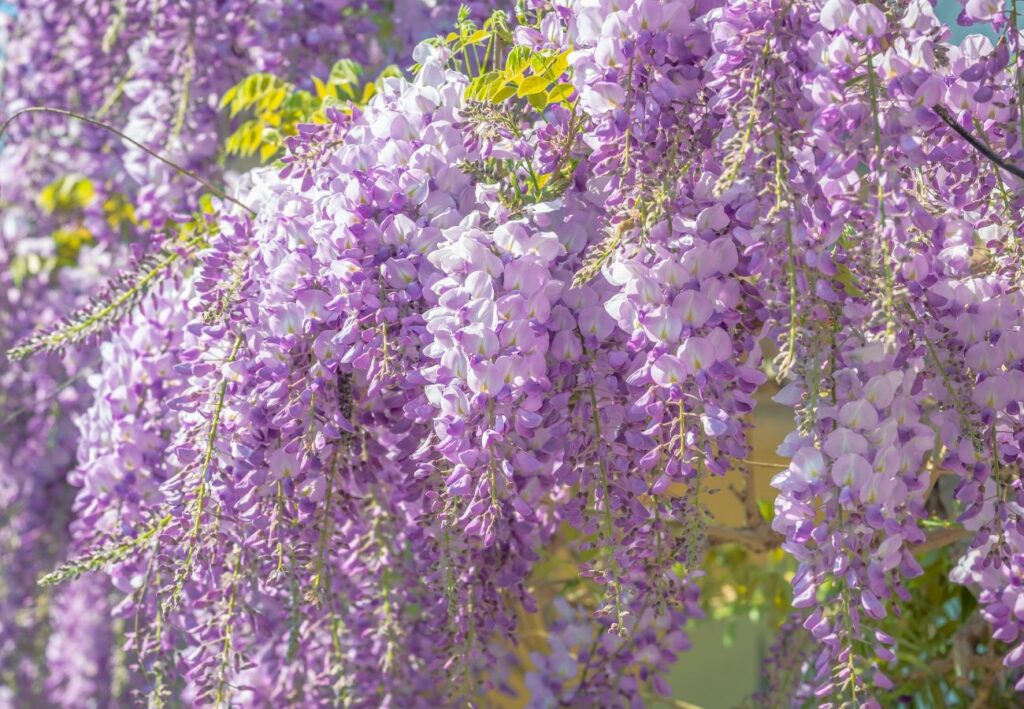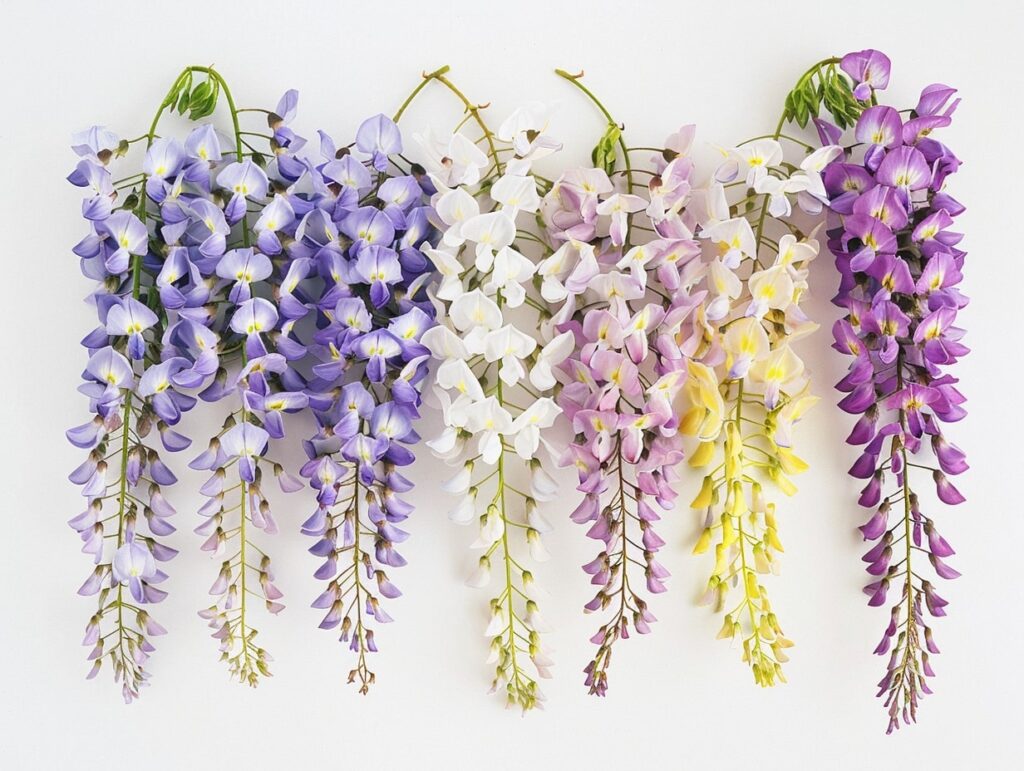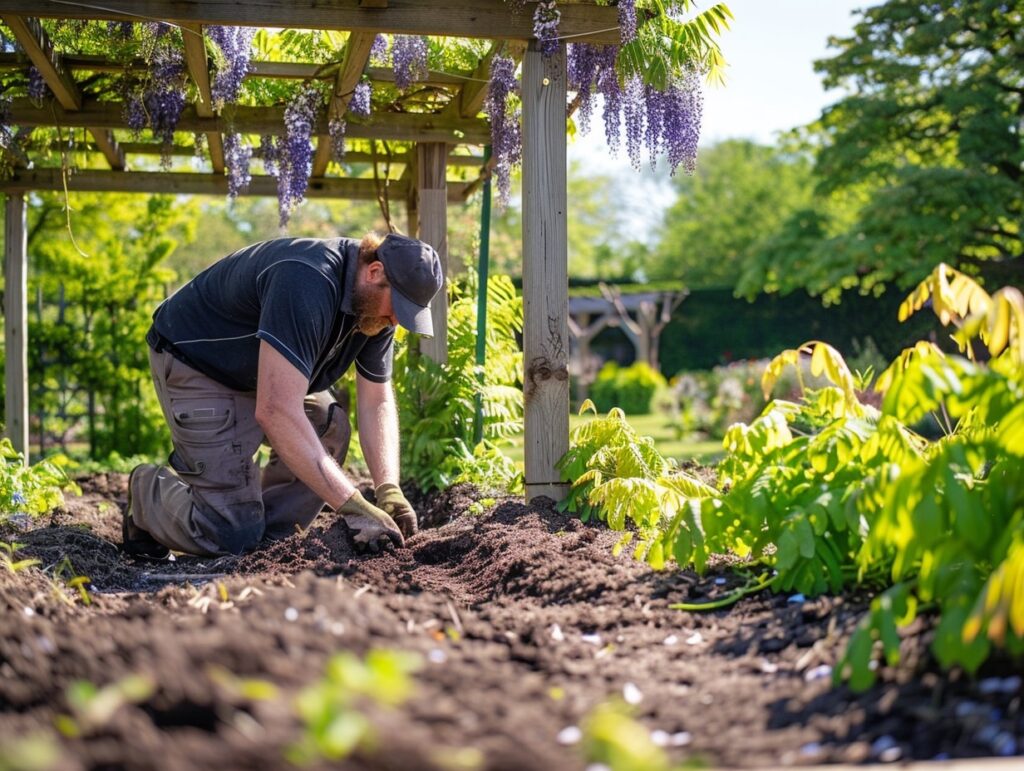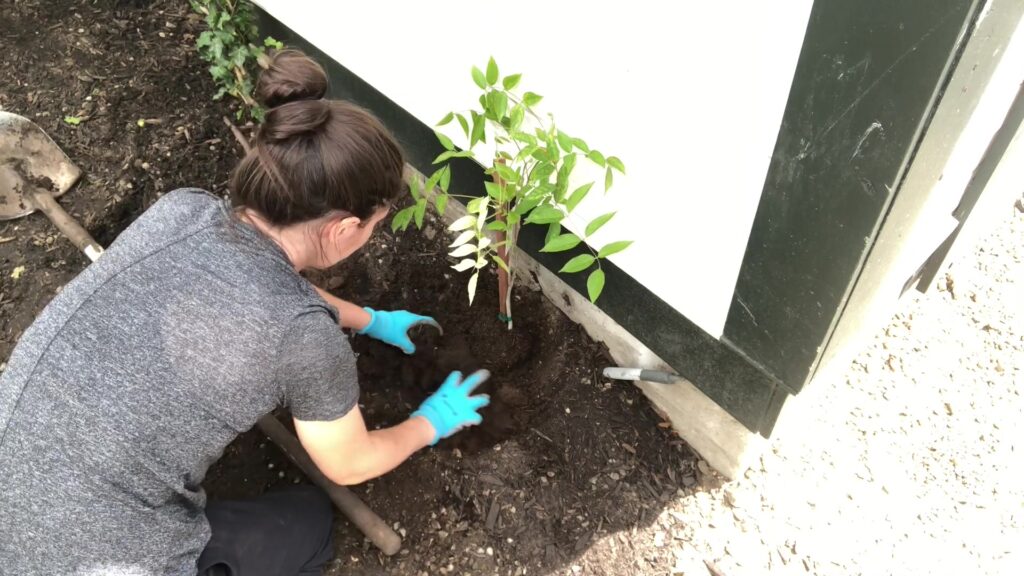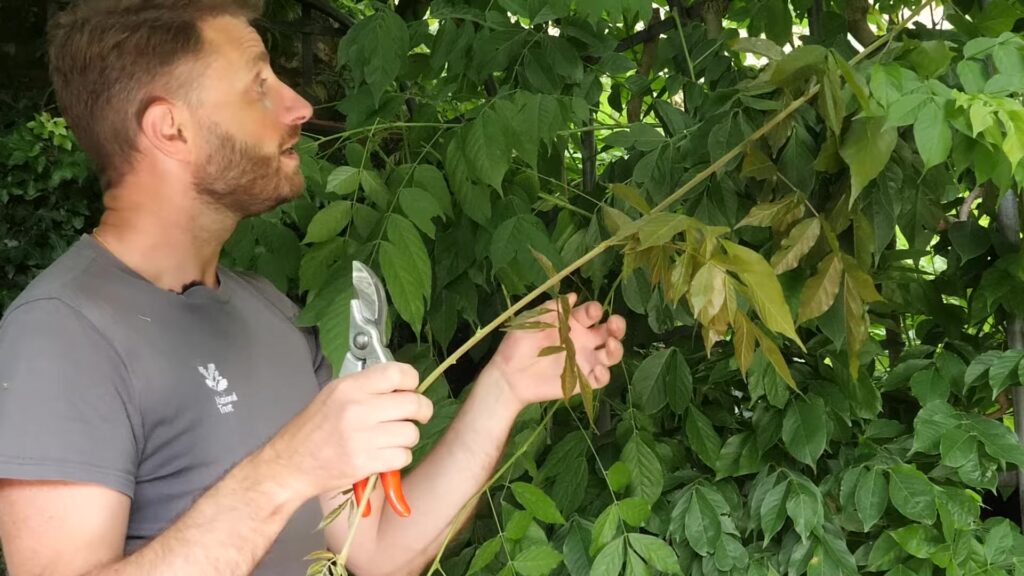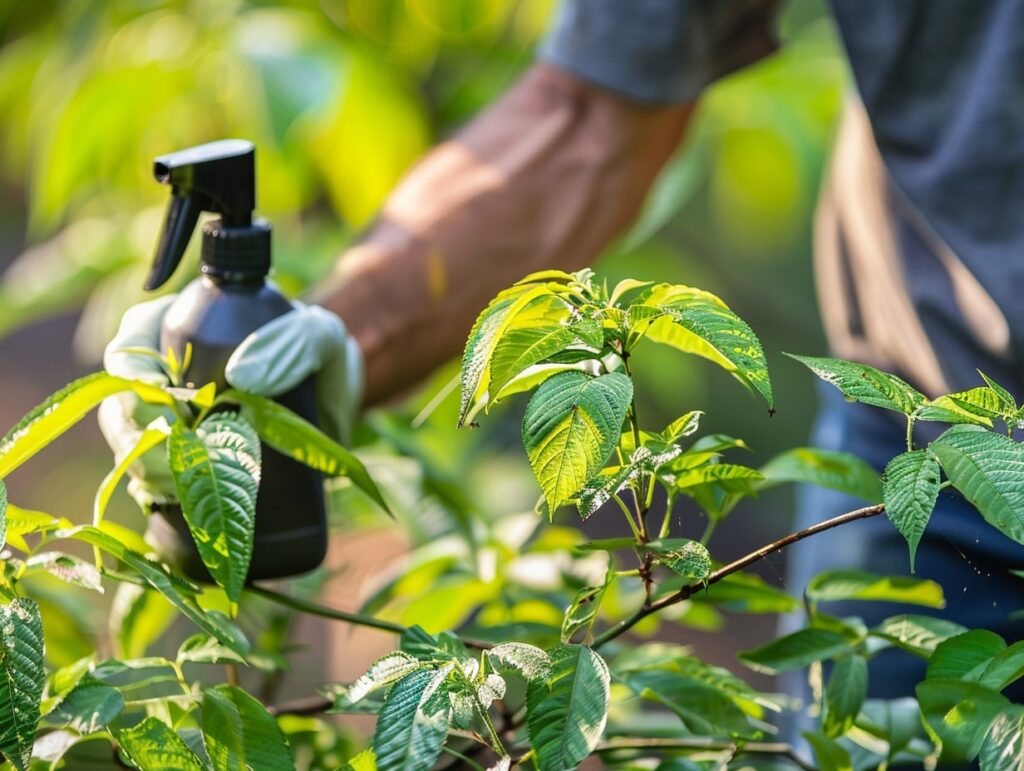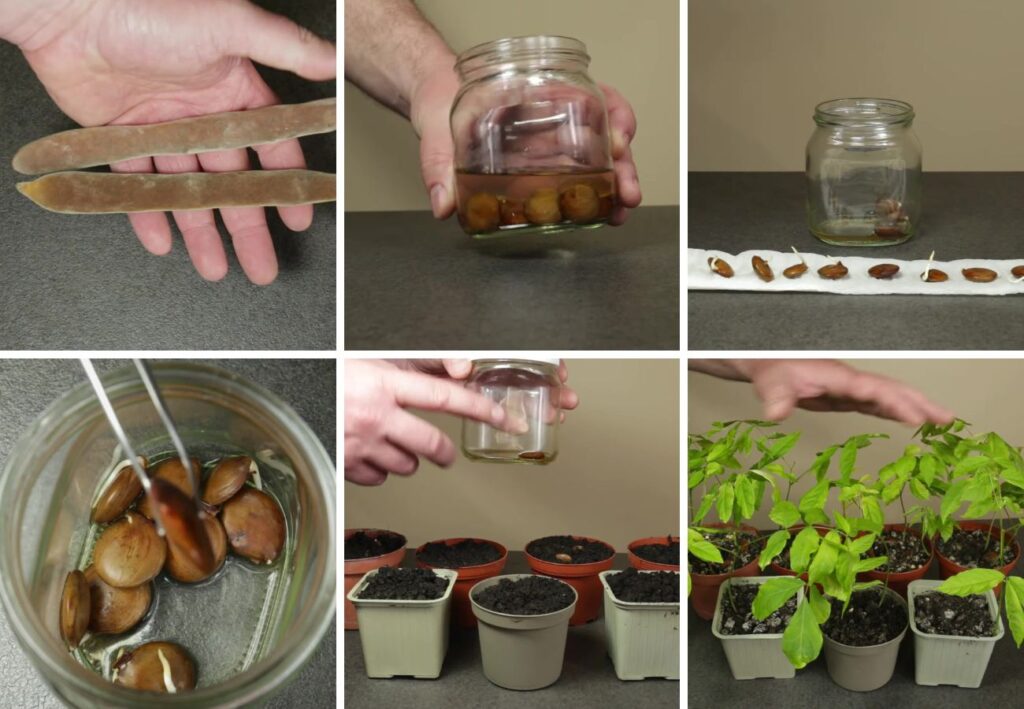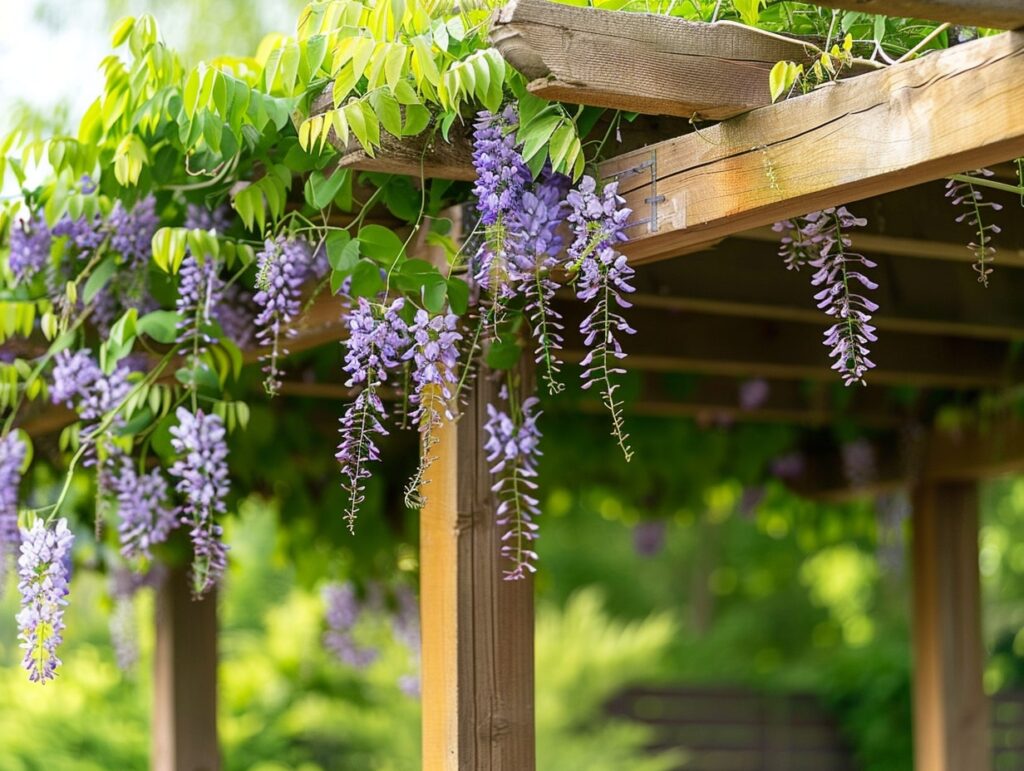Tired of your garden lacking that ‘wow’ factor? Growing and caring for wisteria can change that, transforming your garden into a stunning showcase of cascading purple blooms.
Start by selecting a sunny spot with well-draining soil—this is crucial for your wisteria to thrive and bloom abundantly.
To ensure robust growth, provide sturdy support like a pergola or trellis for the wisteria to climb. Regular pruning is vital for shaping the plant and maximizing flower production, giving you a spectacular floral display every year.
Water your wisteria deeply but infrequently, keeping the soil moist without waterlogging. During the growing season, a balanced fertilizer will promote vigorous growth.
By following these expert tips, you’ll cultivate a healthy, stunning wisteria that transforms your garden into an enchanting oasis, solving your gardening woes and delivering beauty and joy year after year.
Getting to Know Wisteria
Wisteria is well known for its stunning beauty and wide variety of species. It has a rich history, having originated from different parts of the world.
Species and Varieties
Wisteria comes in several species, most commonly Japanese Wisteria (Wisteria floribunda), Chinese Wisteria (Wisteria sinensis), and American Wisteria (Wisteria frutescens).
Each species has unique characteristics. Japanese Wisteria is famous for its long, cascading flowers. It typically blooms in late spring.
Chinese Wisteria tends to have shorter flower clusters but a more vigorous growth habit. American Wisteria is less aggressive and better suited for smaller gardens.
Color options include shades of purple, blue, white, and pink. It’s essential to choose a variety that suits your garden space and climate.
History and Origin
Wisteria has roots in Asia and North America. Chinese Wisteria has been cultivated since the 15th century and was introduced to Europe in the early 19th century. Japanese Wisteria made its way to the West in the 1830s.
In American gardens, Wisteria has been valued since the 1720s. This plant symbolizes love and creativity in many cultures. Historical gardens, especially in Japan and China, showcase its traditional and cultural importance.
Planting Your Wisteria
Successful growth of wisteria starts with the right location and well-prepared soil. Choosing the appropriate spot and ensuring nutrient-rich soil helps your wisteria thrive.
Choosing the Right Location
Pick a location with full sun for the best blooms. Wisteria needs at least six hours of direct sunlight daily. Avoid planting near your home or other structures, as the vines can become invasive and heavy.
Good air circulation is important to prevent fungal diseases. Ensure there’s enough space for the wisteria to grow, as it can reach up to 30 feet. Use a sturdy support structure like a pergola or arbor that can handle the plant’s weight and vigor.
Soil Preparation and Planting Tips
Wisteria thrives in well-draining soil. Test your soil’s pH and aim for a slightly acidic to neutral range (pH 6.0-7.0). Amend the soil with compost to improve fertility and drainage.
Dig a hole twice as wide and the same depth as the root ball. Place the plant in the hole, ensuring the top of the root ball is level with the surrounding soil. Fill in with soil and water thoroughly to settle.
Add a layer of mulch around the base to retain moisture and suppress weeds. Establish a regular watering schedule, especially during the first growing season, to help wisteria become well-established.
Ongoing Care and Maintenance
Caring for wisteria involves maintaining adequate watering, pruning for shape and health, and protecting against pests with proper fertilization.
Watering Requirements
Wisteria needs consistent watering, especially during its first few years of growth and in hot, dry weather. Ensure the soil is moist but well-draining to prevent root rot.
During the growing season, typically water once a week, providing about an inch of water. Mulching around the base helps retain moisture. Reduce watering in the fall and winter to avoid over-saturation.
Pruning Techniques
Regular pruning promotes healthy growth and abundant blooms. Prune wisteria twice a year—once in late winter or early spring before new growth starts and again in summer after flowering.
In late winter, cut back the long shoots from the previous year’s growth to two or three buds. For summer pruning, trim back the same year’s growth to five or six leaves. This approach controls size and encourages flowering.
Fertilization and Pest Control
Use a balanced fertilizer, such as a 10-10-10 formula, in the early spring to boost growth. Avoid high-nitrogen fertilizers as they can lead to excessive leaf growth at the expense of flowers.
Wisterias are generally hardy, but watch out for pests like aphids and scales. Treat infestations with insecticidal soap or neem oil as needed. Regularly inspect the foliage and stems to promptly address any issues.
Propagation and Training
Wisteria can be propagated through layering and seeds. Training it on structures requires initial pruning and regular care to ensure it thrives.
Layering and Seed Propagation
Layering is a reliable method for propagating wisteria. Select a healthy, long stem and bend it to the ground. Cover it with soil, leaving the tip exposed. Water regularly and roots should form within a year.
Alternatively, wisteria can be grown from seeds. Plant seeds in a well-draining mix and keep them moist. Germination can take several weeks. Seed-grown wisterias may take longer to bloom compared to plants propagated through layering.
Training Wisteria on Structures
Training wisteria on structures like trellises, pergolas, or fences requires careful planning. Start by securely attaching the main stem to the structure. Use soft ties to avoid damaging the plant.
Prune new growth to encourage lateral shoots, which will bear flowers. Regular pruning keeps the plant manageable and promotes healthy growth. Wisteria is a vigorous grower, so it’s important to guide and direct its growth early on.
Caring for wisteria can truly elevate your garden, bringing an enchanting display of cascading blooms. By selecting the right location, providing adequate support, and ensuring proper care, you can enjoy the beauty of wisteria year after year.
Remember, consistent watering, regular pruning, and balanced fertilization are essential to maintaining a healthy and thriving plant.
Whether you’re admiring the historical charm of Chinese Wisteria or the vibrant beauty of Japanese varieties, your efforts will be rewarded with a spectacular garden centerpiece. Embrace the journey of growing wisteria and transform your garden into a stunning floral oasis.

